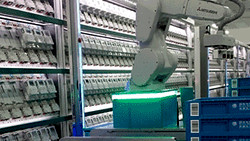Opinion Piece
In the quest for a cleaner planet, the term 'green energy' has become a beacon of hope, a promise of a more sustainable future. Yet, as with many promises, the path to fulfilment is not as clear-cut as we might wish. The question, 'When is Energy Truly Green?' is not just a matter of semantics but a crucial inquiry into the heart of our environmental stewardship.
Green energy is often seen as the panacea for our planet's ailing health, a straightforward swap from the sooty past of coal and oil to a future lit by the clean, unfaltering glow of renewables. However, to truly understand and appreciate the depth of what it means to be green, we must look beyond the surface. This examination isn't just about carbon footprints; it's about the entire dance of creation, operation, and decay that each energy source undergoes.
As a society, we're standing at a crossroads, with the map to our future energy landscape spread out before us. There are routes marked in the bold lines of solar arrays, the sweeping arcs of wind turbines, and even the controversial dotted lines around nuclear power. Yet, as we trace each path with our fingers, we must ask ourselves not only where it leads but also what we leave behind on the journey.
Defining Green Energy
Green energy, by its most common definition, refers to energy sources that are considered environmentally friendly and non-polluting, contrasting sharply with the traditional fossil fuels that have powered humanity for centuries. These fuels, such as coal, oil, and natural gas, have been the workhorses of the industrial revolution and the modern era, but their use has come at a steep environmental cost, largely due to the emission of carbon dioxide and other greenhouse gases.
In contrast, green energy is typically characterized by its renewability and minimal environmental impact during its generation and use. Renewability implies that the energy source is replenished naturally and within a human timescale, ensuring a sustainable supply for future generations. Solar and wind power are prime examples of renewable resources, as they derive their energy from the sun and wind, respectively, which are inexhaustible on a human timescale.
The criteria for classifying an energy source as green extend beyond renewability to include the entire life cycle of energy production. This encompasses not only the absence of harmful emissions during operation but also the environmental impact of manufacturing, installing, maintaining, and eventually decommissioning or recycling the infrastructure associated with the energy source.
For instance, solar panels harness the sun's energy without emitting pollutants during operation. However, the production of these panels involves mining for materials, manufacturing processes, and transportation, all of which have environmental implications. Similarly, wind turbines generate electricity without burning fossil fuels, but their production, installation, and the changes they may bring to local ecosystems and wildlife must also be taken into account.
Thus, when we speak of green energy, we refer to an ideal that is not just about the absence of carbon emissions, but also about a broader commitment to environmental stewardship. This commitment includes careful consideration of resource use, waste generation, habitat disruption, and the potential for recycling or safe disposal at the end of a product's life.
Renewable Energy Sources
Renewable energy sources are diverse, each with its own unique benefits and challenges. Solar, wind, hydroelectric, geothermal, and biomass are the pillars upon which the hopes of a green future are built. They represent the innovative spirit of humanity to harness nature's power in a sustainable manner. Let's delve into the environmental impacts of these sources, considering both their production and operational phases.
Solar Energy
Solar energy is perhaps the most widely recognized form of renewable energy. It works by converting sunlight directly into electricity using photovoltaic cells. Its operation is clean and silent, producing no emissions. However, the production of solar panels involves the use of hazardous materials and significant amounts of water, and there's an ongoing concern about the disposal of panels at the end of their life cycle. Nonetheless, advances in recycling technology and more sustainable manufacturing practices are helping to mitigate these issues.
Wind Energy
Wind energy is another front-runner in the race to green energy. Modern wind turbines can convert wind into electricity without any emissions during their operation. The production of turbines, particularly the large blades, requires substantial materials and energy, and the impact on bird and bat populations has been a point of contention. The placement of wind farms also needs to be strategically planned to avoid disrupting local ecosystems.
Hydroelectric Energy
Hydroelectric power is generated by capturing the energy from flowing water. It's a well-established and reliable energy source that provides significant power without emissions during operation. However, the construction of dams can have profound ecological and social impacts, including the displacement of communities and wildlife, changes in water quality, and alteration of natural river systems.
Geothermal Energy
Geothermal energy taps into the Earth's internal heat to generate electricity. It's a powerful and consistent energy source with a small land footprint. While it emits lower levels of greenhouse gases compared to fossil fuels, geothermal plants can release gases trapped beneath the Earth's surface. The construction of these plants can also affect land stability and water quality.
Biomass Energy
Biomass energy is created by burning organic materials, such as plants and waste. While it's renewable, its green credentials are heavily debated. Biomass plants emit carbon dioxide when burning material, but this is partly offset by the carbon absorbed by the plants during their growth. The sustainability of biomass depends on careful resource management and the ability to balance the carbon equation.
Each of these renewable energy sources has the potential to contribute significantly to a greener future. However, it is clear that the term 'green' cannot simply be taken at face value. The environmental impacts at every stage of the energy life cycle must be considered to make informed decisions about our energy mix.
Nuclear Energy: A Controversial Candidate
Nuclear energy often sparks debate, being a potent source of power that straddles the line between being a friend and foe to the environment. The production of nuclear energy involves a process called nuclear fission, where atomic nuclei are split to release energy. This process takes place within a nuclear reactor, where controlled chain reactions occur, producing heat that is then used to generate electricity.
As a low-carbon source, nuclear energy has significant appeal. It is capable of producing a large amount of continuous, reliable power with virtually no direct carbon emissions. This positions it as a potential ally in the fight against climate change, as it can meet substantial energy demands without contributing to carbon dioxide levels in the atmosphere.
But, nuclear energy is not without its controversies. The management of nuclear waste is a primary concern. Spent nuclear fuel remains hazardous for thousands of years, necessitating secure, long-term storage solutions that have yet to be fully resolved. The potential for catastrophic accidents, such as those seen in Chernobyl and Fukushima, raises serious safety questions. The consequences of such disasters are far-reaching, affecting human health, the environment, and the economy.
The long-term sustainability of nuclear energy is also a matter of contention. Uranium, the fuel used in nuclear reactors, is finite, and although it is more abundant than fossil fuels, it is still subject to the limitations of any non-renewable resource. There is also the issue of nuclear proliferation, as the technology used for producing nuclear energy can also be used to produce nuclear weapons.
Nuclear energy stands as a controversial candidate in the portfolio of power generation options. The debate over its role in our energy future continues to be a dynamic and complex one.
Public Perception and Responsibility
The dynamics of the energy landscape are not solely dictated by technological advancements or policy changes; public perception and individual responsibility play a substantial role in shaping our collective energy future. Public opinion often drives demand for greener energy solutions and can lead to shifts in energy policies and market dynamics. Individuals, through their choices and consumption habits, directly influence the demand for energy and consequently the types of energy that are produced and supplied.
It's essential to understand the power of public perception. When people collectively demand cleaner, more sustainable energy options, governments and energy companies are prompted to respond. This can be seen in the increased investment in renewable energy sources, like solar and wind power, which have grown in popularity as the public becomes more environmentally conscious.
The rise in electric vehicle sales, partly due to consumer demand for lower-emission transportation, is another example of public perception influencing the energy sector.
Public opinion also has the power to hold corporations accountable for their environmental impact, pushing them towards more sustainable practices. Social media campaigns, consumer boycotts, and shareholder activism have prompted many companies to adopt greener energy sources and reduce their carbon footprint.
On an individual level, choices about energy consumption can have a far-reaching impact. By opting for energy-efficient appliances, reducing waste, and being mindful of our daily energy use, each person can contribute to a lower demand for fossil fuels.
Simple actions like turning off lights when not in use, using public transport, or installing a programmable thermostat can collectively make a significant difference.
Encouragingly, individual responsibility is not just about reduction. It also involves being proactive, such as choosing a green energy provider, investing in home solar panels, or participating in community energy projects. These individual decisions, when multiplied across a population, can accelerate the transition to a greener energy landscape.
As individuals, we must recognise our role in the energy ecosystem and the power we hold to drive change through our choices and behaviours. By considering the broader implications of where and how we consume energy, we can all contribute to a more sustainable and responsible energy future.
Takeaway
Labelling an energy source as unequivocally 'green' can be a complex task, as it involves considering various environmental, economic, and social factors. While renewable energy sources such as wind, solar, and hydroelectric power are often branded as 'green' due to their lower greenhouse gas emissions, the full picture of their environmental impact can be more nuanced.
While the pursuit of 'green' energy is admirable and necessary, it is important to critically assess and understand the complexities involved. By doing so, we can make more informed decisions that contribute to a sustainable energy future that is truly in harmony with our planet's ecosystems.







All comments are moderated before being published. Inappropriate or off-topic comments may not be approved.